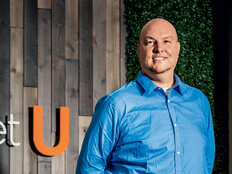How Data Analytics Benefits Both Seniors and Care Providers
Senior care professionals increasingly turn to smart home technologies to meet patients’ needs.
As this trend grows, it becomes clear that sensors and digital devices don’t just make it easier and safer for seniors to live independently; they also provide a wealth of data that can be useful to everyone engaged in caregiving — including seniors themselves. Analysis and visualization tools transform this data into patterns and insights that make it easy for caregivers to spot situations requiring their attention.
Smart home devices can set off an alert if, for example, a sink overflows and triggers a moisture sensor. Personal health monitors can send if a resident’s pulse rate drops or blood sugar spikes. And, of course, a senior living in a community or at home can call for help using any number of devices: an emergency pendant, personal smartphone, or home assistant like Amazon Echo and Google Home.
The right data analytics can generate many other types of useful real-time alerts. For example, if a senior living independently doesn’t take his or her medication for a certain period of time, an alert can be sent to an adult-child caregiver or assigned neighbor nearby. Such notifications strengthen the senior’s social safety net and promote earlier intervention in potentially problematic situations.
For providers, one challenge remains: Notification thresholds for this type of alert can’t be fixed or arbitrary. Some seniors are punctual and diligent about taking their pills, so a delay of less than an hour may indicate a problem. Others routinely miss a dosage here and there. Therefore, any viable alerting mechanism must interpret a missed dosage in the right context to avoid generating too many false positives or missing a potentially critical event. In other words, effective alerting depends on effective behavior baselining — the core capability of modern analytics.
Intervening at the Right Time
Effective senior care isn’t just about coming to the rescue in case of emergency. It’s also about taking appropriate measures as early as possible when a senior’s condition starts to change.
That’s where the data collected from personal health monitors and smart home devices can be particularly valuable. Data from connected devices can be used in much the same way as it is now, except that caregivers don’t have to rely on home visits — and readings can be taken much more often. More frequent readings yield more precise and more accurate insights into patterns, such as blood glucose dropping too precipitously late at night.
With the right analytics, data from smart home devices adds a whole new dimension of insight to basic medical information. If a senior is opening the refrigerator and using the stove less often, for example, that could be an indication of a problematic change in eating habits. A growing tendency to watch TV later at night combined with fewer hours in bed could suggest that a sleep issue requires attention.
As with real-time alerting, trend detection requires accurate baselining for each individual. Smart interpretation and visualization of data is also important. Is the current trend a continuation of a natural long-term change in habits? Does it represent sudden, steep acceleration of a trend that was already present? Are multiple trends correlating in a way that should arouse concern? These questions and others can help caregivers better leverage the data that smart homes generate to provide seniors with more attentive care.
Seniors, caregiving institutions and medical practitioners all benefit when analytics are applied to the aggregate data from multiple senior residences. These insights can uncover patterns of behavior that may correlate to a variety of safety and quality-of-life issues.
Falls, for example, are generally considered to be a primary risk for seniors living independently. There’s also general agreement that insufficient sleep can put seniors at greater risk of falling. So, by promoting longer, more restful sleep, caregivers can help seniors stay safe.
Aggregate analytics can yield insights that help individuals optimize sleep quality. Data analysts can look at multiple inputs to see how factors such as noise levels, exposure to blue light from a digital device, and late-night eating affect sleeping patterns — and how personal attributes such as age, weight, sex and hearing loss affect the influence of those factors. The resulting insights can help seniors make better, fact-based choices about their lifestyles and living environments — whether they stay in their homes or move to a caregiving community.
Download the free white paper, "Better Connecting Seniors at Home" to learn more.









